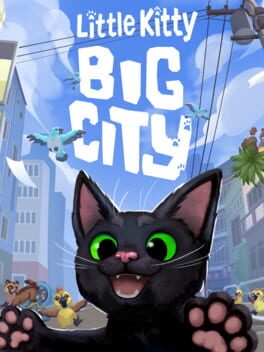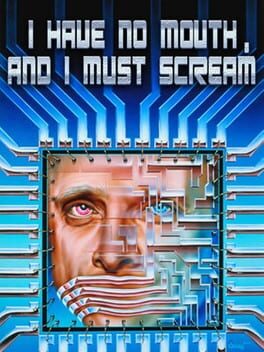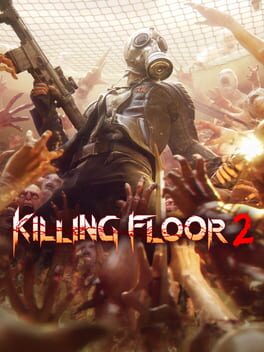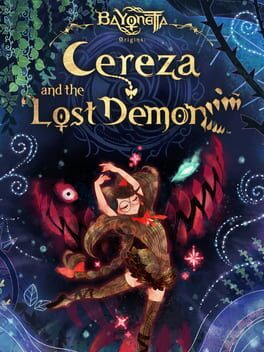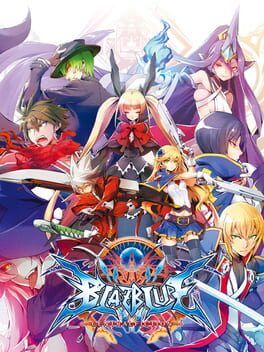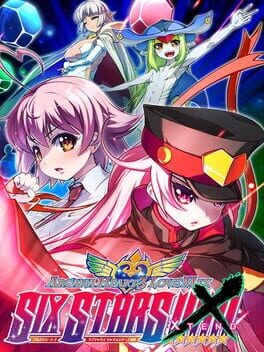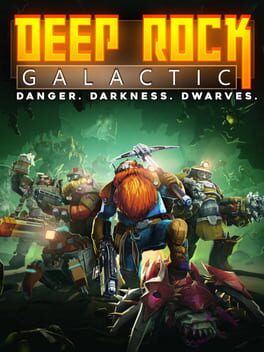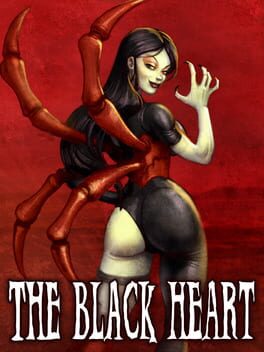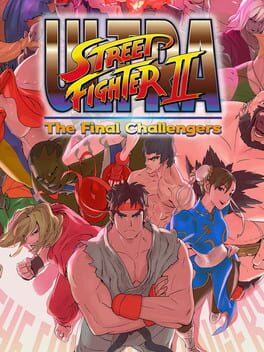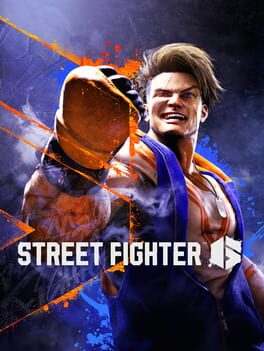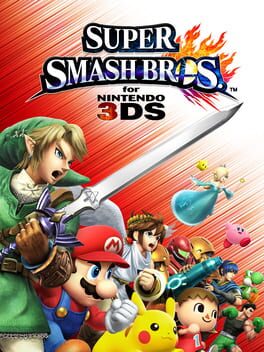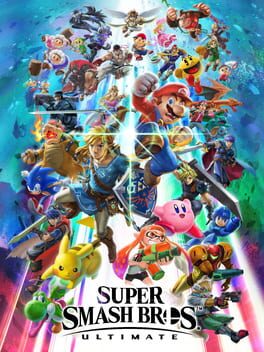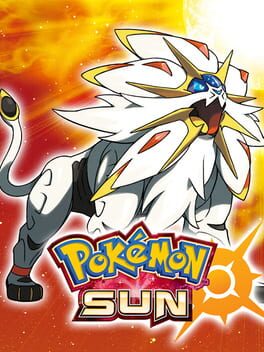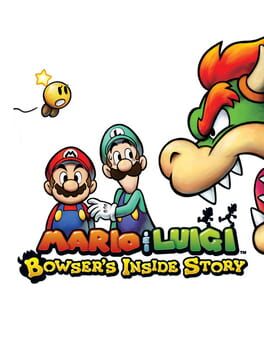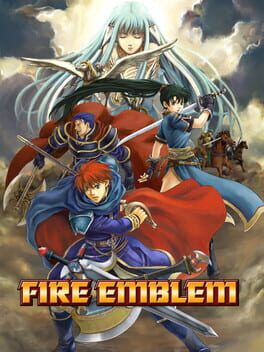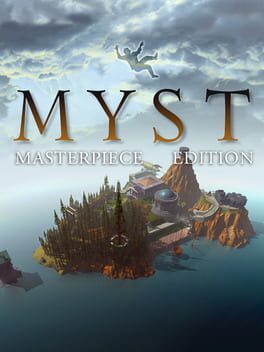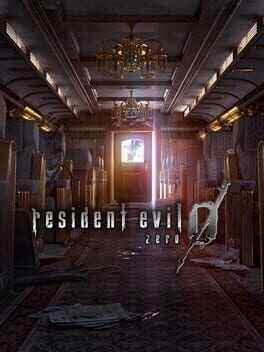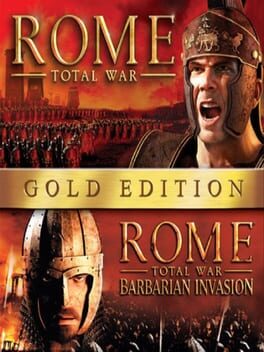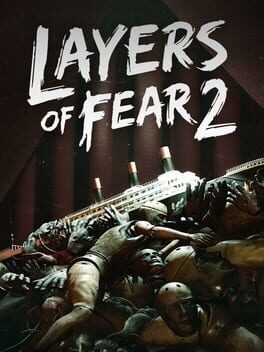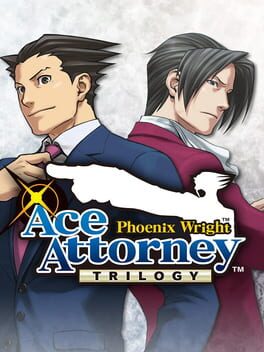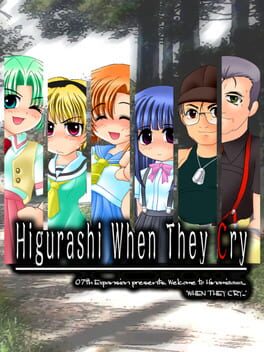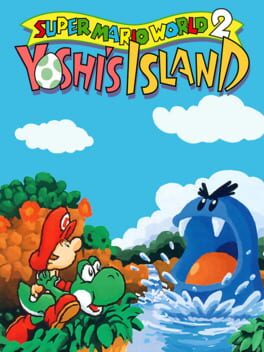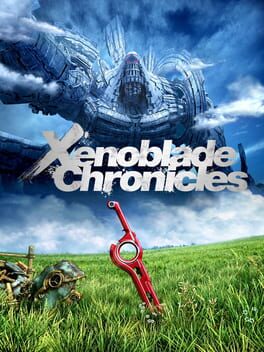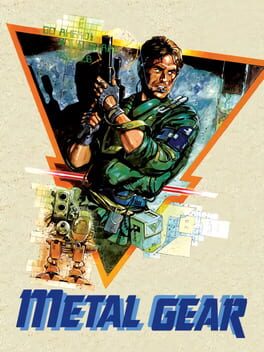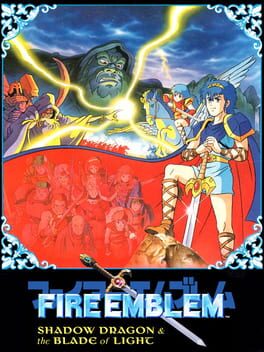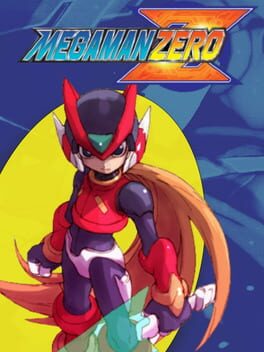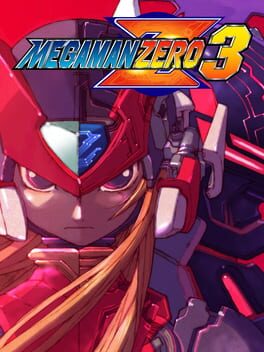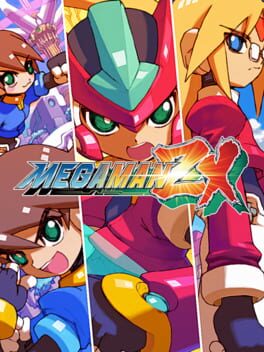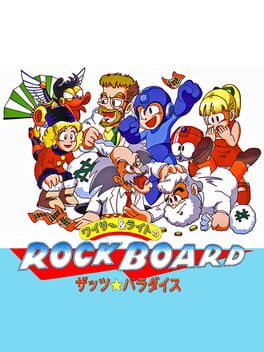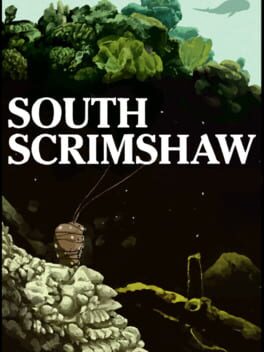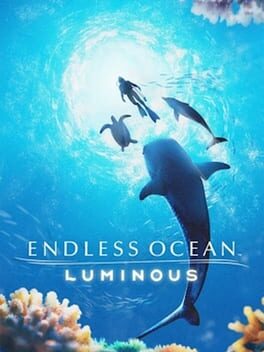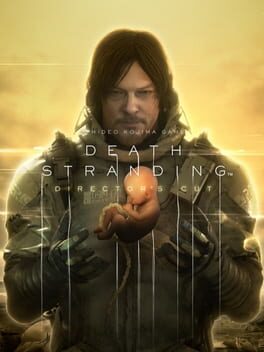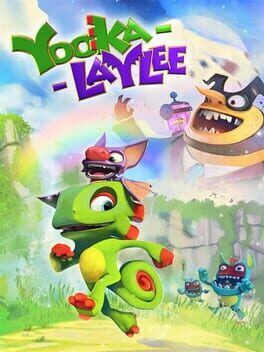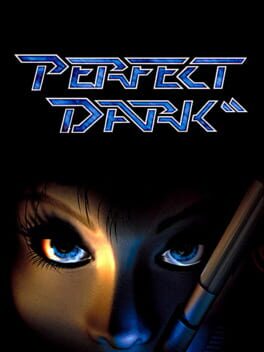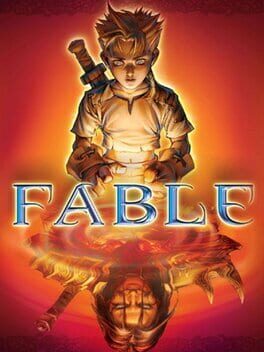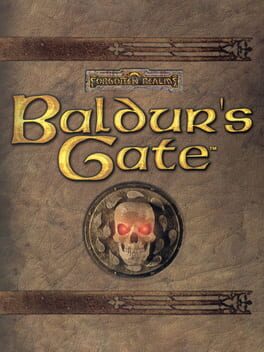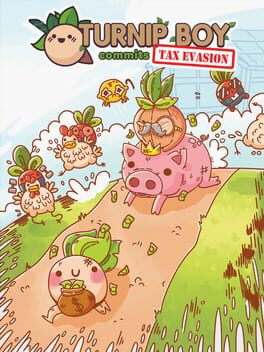zeusdeegoose
3128 reviews liked by zeusdeegoose
Jogo simples de um gatinho que lançou no Game Pass. Falta apenas uma conquista para eu pegar 100% nele. É um game bem legal para passar o tempo, já que é bem simples. Algumas mecânicas do game podem parecer um pouco confusas no início, porém com o tempo você pega a manha e fica bem tranquilo de se jogar. Como disse antes, é um jogo bem simples... Não espere grandes coisas vindo dele, mas ainda é um jogo divertido com uma história fofa que vale a pena conferir.
Breath of the Wild is like ice cream, a sweet treat that a majority of people love, but loses its allure when consumed in excess. Tears of the Kingdom, on the other hand, is like one of those cookie ice cream sandwiches. Just like plain ice cream, they’re pretty damn good, but they’re easier to get tired of and are arguably more divisive.
Tears of the Kingdom takes Breath of the Wild, slams some layers on either side of it and throws in some new stuff and story changes in the middle. It's great but it can certainly be a bit much. For example, the new layers - the sky islands and the depths - are massive additions to the game, but fall a bit flat when fully scoured. There’s a lot of cool stuff in both spots, but when the player delves deeper, they realize that it's a lot of the same cool stuff, making the whole experience a little less magical. Finding an underground coliseum challenge is cool the first time, but the second time? The third time? It's just not the same, and the first time isn’t as powerful as a result.
There’s certainly an argument to be made that the sky islands and depths should have either been fleshed out or shrunk, but maybe the excess isn’t so bad. After all, a vast majority of players aren’t going to be in the game long enough to see this repetition in the first place. Of course, unique content is always better than repetitive material, but in a game like Tears where the player is constantly getting new materials and tools, each new instance of a previously encountered situation or problem is a chance to experiment with new solutions, something that can’t be said for other games with repetitive content. Ideally, the new areas would just have new, unique puzzles, but a game like Tears is a case where it works, or at least can work depending on how the player approaches it.
Speaking of the tools Tears provides, gone are the Sheikah tools from Breath of the Wild, in are the new Zonai tools Link gained from his cool new arm. Rewind allows Link to move an object back in time, primarily utilized to solve puzzles and to gain elevation using fallen rocks, but also has uses in combat. Ascend is pretty simple, it allows Link to swim up through ceilings and pop out on the other side, very useful when exiting the caves, another new addition to Tears. Fuse lets Link attach items to his weapons, shields, and arrows, a cool way to strengthen Link early on, but almost a necessity to ensure fights with stronger enemies don’t take forever. Ultrahand is the big one, it lets Link build machines using his new arm to move things like magnesis did to metal items in Botw. It also allows Link to glue items together. It's a little clunky and the creations push the switch to its limits, but it's the selling point to the game for a reason, and gives the player more options than anything in Breath of the wild. Autobuild is the last new tool, and allows for the recreation of previous machines even without all the materials (at the cost of other materials of course). The camera also makes a welcome return, and works just as it did in Botw. Tears also incorporates most of the Sheikah abilities from Botw in some way. Bomb flowers work kinda like the Sheikah bombs, ultrahand does everything magnesis does and then some, ice flowers and ice weapons can create ice slabs on water, and rewind can freeze items temporarily if turned on and off right away (that one is a bit of a stretch).
The story is in the same format as Breath of the Wild: Link needs to explore the world and collect some memories to put together the whole picture. Unfortunately it doesn’t work quite as well in TotK. Because of how the memories are structured, seeing them out of order doesn’t work nearly as well as it did for the more disconnected ones in Botw. A shame, because the method of collecting dragon tears is far more interesting than simply looking at pictures and locating where they were taken. The order in which things are collected is actually a problem in other aspects of the game; the paraglider is missable now, as it is given after an interaction in lookout landing rather than when leaving the initial area. It's a baffling decision considering how important the paraglider is to exploration. Autobuild is also tied to a completely missable sidequest in the depths, another odd decision when building things is such a huge part of the game.
Tears unfortunately doesn’t fix some of Breath’s biggest issues, such as menuing which is even worse (especially the arrow fusing menu) and weapon durability is even more divisive considering how having good fusible items is almost as important as having weapons to fuse with in the first place.
However, this ice cream sandwich tastes kinda good actually.
For all the issues this game has, actually playing it makes them melt away, especially early on. Tears is not a game meant to be 100%, it's meant to be played as long as the player finds themself engaged. The sheer inventiveness on display here is staggering, Tears allows the player to do and try things that no other games do, and that's an accomplishment. Problems be damned, there’s plenty of fun to be had and memories to be made in Tears, and it deserves the recognition its garnered.
Tears of the Kingdom takes Breath of the Wild, slams some layers on either side of it and throws in some new stuff and story changes in the middle. It's great but it can certainly be a bit much. For example, the new layers - the sky islands and the depths - are massive additions to the game, but fall a bit flat when fully scoured. There’s a lot of cool stuff in both spots, but when the player delves deeper, they realize that it's a lot of the same cool stuff, making the whole experience a little less magical. Finding an underground coliseum challenge is cool the first time, but the second time? The third time? It's just not the same, and the first time isn’t as powerful as a result.
There’s certainly an argument to be made that the sky islands and depths should have either been fleshed out or shrunk, but maybe the excess isn’t so bad. After all, a vast majority of players aren’t going to be in the game long enough to see this repetition in the first place. Of course, unique content is always better than repetitive material, but in a game like Tears where the player is constantly getting new materials and tools, each new instance of a previously encountered situation or problem is a chance to experiment with new solutions, something that can’t be said for other games with repetitive content. Ideally, the new areas would just have new, unique puzzles, but a game like Tears is a case where it works, or at least can work depending on how the player approaches it.
Speaking of the tools Tears provides, gone are the Sheikah tools from Breath of the Wild, in are the new Zonai tools Link gained from his cool new arm. Rewind allows Link to move an object back in time, primarily utilized to solve puzzles and to gain elevation using fallen rocks, but also has uses in combat. Ascend is pretty simple, it allows Link to swim up through ceilings and pop out on the other side, very useful when exiting the caves, another new addition to Tears. Fuse lets Link attach items to his weapons, shields, and arrows, a cool way to strengthen Link early on, but almost a necessity to ensure fights with stronger enemies don’t take forever. Ultrahand is the big one, it lets Link build machines using his new arm to move things like magnesis did to metal items in Botw. It also allows Link to glue items together. It's a little clunky and the creations push the switch to its limits, but it's the selling point to the game for a reason, and gives the player more options than anything in Breath of the wild. Autobuild is the last new tool, and allows for the recreation of previous machines even without all the materials (at the cost of other materials of course). The camera also makes a welcome return, and works just as it did in Botw. Tears also incorporates most of the Sheikah abilities from Botw in some way. Bomb flowers work kinda like the Sheikah bombs, ultrahand does everything magnesis does and then some, ice flowers and ice weapons can create ice slabs on water, and rewind can freeze items temporarily if turned on and off right away (that one is a bit of a stretch).
The story is in the same format as Breath of the Wild: Link needs to explore the world and collect some memories to put together the whole picture. Unfortunately it doesn’t work quite as well in TotK. Because of how the memories are structured, seeing them out of order doesn’t work nearly as well as it did for the more disconnected ones in Botw. A shame, because the method of collecting dragon tears is far more interesting than simply looking at pictures and locating where they were taken. The order in which things are collected is actually a problem in other aspects of the game; the paraglider is missable now, as it is given after an interaction in lookout landing rather than when leaving the initial area. It's a baffling decision considering how important the paraglider is to exploration. Autobuild is also tied to a completely missable sidequest in the depths, another odd decision when building things is such a huge part of the game.
Tears unfortunately doesn’t fix some of Breath’s biggest issues, such as menuing which is even worse (especially the arrow fusing menu) and weapon durability is even more divisive considering how having good fusible items is almost as important as having weapons to fuse with in the first place.
However, this ice cream sandwich tastes kinda good actually.
For all the issues this game has, actually playing it makes them melt away, especially early on. Tears is not a game meant to be 100%, it's meant to be played as long as the player finds themself engaged. The sheer inventiveness on display here is staggering, Tears allows the player to do and try things that no other games do, and that's an accomplishment. Problems be damned, there’s plenty of fun to be had and memories to be made in Tears, and it deserves the recognition its garnered.
Animal Well
2024
Adding to the list of quality Metroidvanias lately, Animal Well is a largely vague game about a blob creature (?) that explores an atmospheric labyrinth with many secrets to find. There’s no combat save for avoiding occasional enemies and mainly focused on figuring out how to progress using the items you find throughout. The level design and platforming puzzles were well done and made clever use of all the mechanics, though were still straightforward enough that I wasn’t stuck on much for very long. The pixel art is really great too
Reaching credits took about 8 hours for me, but this also appears to be a game with a lot of hidden depth to it going off reviews and how much unexplained stuff I can still find (similar to Tunic it seems). Curious to see how much more you can get out of its postgame, but for the main content alone it’s well worth it
Reaching credits took about 8 hours for me, but this also appears to be a game with a lot of hidden depth to it going off reviews and how much unexplained stuff I can still find (similar to Tunic it seems). Curious to see how much more you can get out of its postgame, but for the main content alone it’s well worth it
What you have here is a 90s point-and-click adventure game adaptation of a 60s short story, with heavy involvement of the original author, that (in my opinion) surpasses that original work. Unlike the short story, there's an underlying theme of hope within the hopeless walls of AM. Hope, not for salvation, but closure, to make amends with your past. Great story, great presentation, absolutely a game worth playing.
Super Mario 64
1996
Killing Floor 2
2015
PokéRogue
2024
Animal Well
2024
One of the most unique and polished metroidvanias I’ve played. There’s the unique art design, blending pixelated retro graphics with neon colours and modern smoke, fluid and lighting effects, all coming together to give it this very surreal, very serene yet sinister atmosphere. There’s the open ended structure, full of branching paths and skips, I honestly can’t see any two players having the same first playthrough, and it goes without saying that it gives value to subsequent playthroughs. There’s the items, which take an almost Outer Wilds or Tunic kind of approach, where throughout the game you discover you have abilities and functions that you’ll realize were actually there the whole time. There’s the puzzles, some of which have more than one solution and encourage thinking outside the box. There’s all the surprises and hidden secrets, some of which really drive home the Outer Wilds/Tunic parallels. There’s the lack of tutorials or lines of text telling you what to do, its complete trust in you the player to figure it out yourself. All of this being made by just one guy. Billy Basso really had a very thorough creative vision and an exorbitant amount of passion and talent to see it through. I think he’s made something special, I feel pretty confidently in saying this is among the top 3 metroidvanias I’ve ever played.
Say what you will about Dunkey, but he has a damn good eye for indies and it’s endearing to see him use the platform he’s built to prop up smaller independent creatives like this. I’m excited to see what else Bigmode publishes down the line.
Say what you will about Dunkey, but he has a damn good eye for indies and it’s endearing to see him use the platform he’s built to prop up smaller independent creatives like this. I’m excited to see what else Bigmode publishes down the line.
Train your ears as you make your way through Avalon Forest and you can practically hear a familiar sound.
You could quite easily argue that Bayonetta Origins is the most Clover-esque game to come out of Platinum thus far, but it becomes apparent early on that its level design and progression structure’s drawing from a very different well: Metroid! Areas and items initially just out of reach, cordoned off by the likes of icy branches or rippling lakes, become open as Cheshire gains more elemental powers. These powers sidestep the common issue of feeling like glorified keys by the degree to which they flesh out the game’s action portions, simultaneously enabling a combat system that has more going on by the midway point than most comparable titles do by their climax and bolstering the setting’s labyrinthine characterisation through mechanics. With Metroid Prime fresh in everyone’s minds after having recently been treated to an atypically faithful remaster, one would hope audiences have a renewed appreciation for how rare it is to see this sort of design even attempted in 3D, nevermind executed to such a standard that every loop and interconnection between Avalon’s different biomes feels geographically plausible.
Neither Cereza nor Cheshire will be shinesparking their way out of bounds, to be clear, but that’s just as well, because the artistry on display in Origins is made to be soaked in at a leisurely pace. To illustrate the point, here’s a collage I made out of some of my screenshots. This game’s beautiful, there’s no other word for it, but one reason that’s exciting is because it’s reflective of the hidden talent yet lurking within Platinum. The staff behind Origins includes more than a bit of new blood, including the game’s director, and (if I’m not mistaken) this is Tomoko Nishii’s first time in the art director’s seat. We may hope that her and her team’s work is recognised and rewarded, because the world needs more games that can cause me to involuntarily mumble “how did they do that?” more than once. Their interpretation of Irish mythology is especially ace – the stained-glass, crystalline whimsy of the Tír na nÓgs and the faeries is a wonderful fit for the imagery conjured up by folk songs I’d heard as a wean.
As befits a playable storybook, all involved with the narrative side of Origins demonstrate a similarly tight grasp of their crafts. The voice direction here’s easily on par with that of The Wonderful 101 and suits the characters’ expressive visuals so well, the narrator’s gruff impression of Cheshire being particularly brilliant but not so much as to outshine or overshadow Angeli Wall, whose understanding of Cereza is such that you can all but hear flashes of her future self buried under layers of insecurity and self-consciousness. Therein lies a key strength of Origins – recontextualisation. Every instance of Bayonetta’s attitude in the mainline games feels all the more nuanced having now been exposed to her humblest of beginnings. Considering what he endures in this game, Cheshire has well and truly earned his right to be such a goofball by the time he becomes Viola’s companion (maybe that’s not just tobacco in his pipe). A post-game bonus chapter redefines Jeanne’s eventual fate as a knowing act of selflessness where previously it might’ve seemed uncharacteristic of her. It all represents the best kind of storytelling one could ask of a prequel, i.e. that which retroactively enriches the rest of its franchise.
This harmoniousness is part of why the sentiment I’ve occasionally read cropping up, that Origins turning out to be as great a game as it is in wake of Bayonetta 3 is somehow surprising, is one I find a little perplexing. If Origins’ quality might be seen in relation to its companion piece in any capacity, it’s in a sense that vindicates and is complementary to that game’s principles, not which stands in contrast to them. Origins shares more than a bit of its DNA – the core axis of controlling two characters simultaneously, multiple currencies with independent purposes, a boss, several characters and visual motifs – but perhaps the most important component is the same willingness to throw caution to the wind and upend series conventions, taken to the more extreme conclusion of completely overturning the tone, art style and general formula associated with Bayonetta as opposed to “just” altering all of those significantly. It’s an already bold direction that Origins has doubled down on, which seems a hard thing not to respect when courting mass appeal would likely be so much easier.
If all hasn’t made it clear already, this is the type of game that a cynic might describe as one that doesn’t happen anymore. It’s borne of pure passion, in other words, and come the end credits, there’ll be no doubt in your mind that the team behind it are utterly in love with these characters and the world they inhabit. As rich in mechanics as in story, stuffed with unlockable costumes, riddled with the little things (check out Cheshire’s idle animations in each of his elemental forms) and representing a series with no shortage of fresh ideas, you can’t reasonably ask for more than this.
Let’s dance, and possibly pet some bunny rabbits.
You could quite easily argue that Bayonetta Origins is the most Clover-esque game to come out of Platinum thus far, but it becomes apparent early on that its level design and progression structure’s drawing from a very different well: Metroid! Areas and items initially just out of reach, cordoned off by the likes of icy branches or rippling lakes, become open as Cheshire gains more elemental powers. These powers sidestep the common issue of feeling like glorified keys by the degree to which they flesh out the game’s action portions, simultaneously enabling a combat system that has more going on by the midway point than most comparable titles do by their climax and bolstering the setting’s labyrinthine characterisation through mechanics. With Metroid Prime fresh in everyone’s minds after having recently been treated to an atypically faithful remaster, one would hope audiences have a renewed appreciation for how rare it is to see this sort of design even attempted in 3D, nevermind executed to such a standard that every loop and interconnection between Avalon’s different biomes feels geographically plausible.
Neither Cereza nor Cheshire will be shinesparking their way out of bounds, to be clear, but that’s just as well, because the artistry on display in Origins is made to be soaked in at a leisurely pace. To illustrate the point, here’s a collage I made out of some of my screenshots. This game’s beautiful, there’s no other word for it, but one reason that’s exciting is because it’s reflective of the hidden talent yet lurking within Platinum. The staff behind Origins includes more than a bit of new blood, including the game’s director, and (if I’m not mistaken) this is Tomoko Nishii’s first time in the art director’s seat. We may hope that her and her team’s work is recognised and rewarded, because the world needs more games that can cause me to involuntarily mumble “how did they do that?” more than once. Their interpretation of Irish mythology is especially ace – the stained-glass, crystalline whimsy of the Tír na nÓgs and the faeries is a wonderful fit for the imagery conjured up by folk songs I’d heard as a wean.
As befits a playable storybook, all involved with the narrative side of Origins demonstrate a similarly tight grasp of their crafts. The voice direction here’s easily on par with that of The Wonderful 101 and suits the characters’ expressive visuals so well, the narrator’s gruff impression of Cheshire being particularly brilliant but not so much as to outshine or overshadow Angeli Wall, whose understanding of Cereza is such that you can all but hear flashes of her future self buried under layers of insecurity and self-consciousness. Therein lies a key strength of Origins – recontextualisation. Every instance of Bayonetta’s attitude in the mainline games feels all the more nuanced having now been exposed to her humblest of beginnings. Considering what he endures in this game, Cheshire has well and truly earned his right to be such a goofball by the time he becomes Viola’s companion (maybe that’s not just tobacco in his pipe). A post-game bonus chapter redefines Jeanne’s eventual fate as a knowing act of selflessness where previously it might’ve seemed uncharacteristic of her. It all represents the best kind of storytelling one could ask of a prequel, i.e. that which retroactively enriches the rest of its franchise.
This harmoniousness is part of why the sentiment I’ve occasionally read cropping up, that Origins turning out to be as great a game as it is in wake of Bayonetta 3 is somehow surprising, is one I find a little perplexing. If Origins’ quality might be seen in relation to its companion piece in any capacity, it’s in a sense that vindicates and is complementary to that game’s principles, not which stands in contrast to them. Origins shares more than a bit of its DNA – the core axis of controlling two characters simultaneously, multiple currencies with independent purposes, a boss, several characters and visual motifs – but perhaps the most important component is the same willingness to throw caution to the wind and upend series conventions, taken to the more extreme conclusion of completely overturning the tone, art style and general formula associated with Bayonetta as opposed to “just” altering all of those significantly. It’s an already bold direction that Origins has doubled down on, which seems a hard thing not to respect when courting mass appeal would likely be so much easier.
If all hasn’t made it clear already, this is the type of game that a cynic might describe as one that doesn’t happen anymore. It’s borne of pure passion, in other words, and come the end credits, there’ll be no doubt in your mind that the team behind it are utterly in love with these characters and the world they inhabit. As rich in mechanics as in story, stuffed with unlockable costumes, riddled with the little things (check out Cheshire’s idle animations in each of his elemental forms) and representing a series with no shortage of fresh ideas, you can’t reasonably ask for more than this.
Let’s dance, and possibly pet some bunny rabbits.
I have this propensity to never play games a second time, even the ones I love. It serves me well more often than not, because I greatly value backlog exploration and sheer variety over mechanical or scholarly mastery of any specific title. Where it bites me in the wahooey, however, is in largely skill-oriented titles like character action games, ones that demand keen attentiveness and willingness to retain and juggle knowledge of systems macro and micro. For as much as I love these games for their absolutely unbridled pomp and the hot-blooded verve that courses thru em - I know I’m not going to get the most out of them, I just don’t have that kind of attention. Bayonetta 1 is astoundingly good, but it’s a game I essentially Bronze Trophied my way through, and only watched .webms of people going sicko online for. I only knew what dodge offset WAS when I hit the last level, when it was too late for me 😔.
Bayorigins: Wily Beast and Weakest Creature is just a nice little scrimblo that forces a more steady pace with its longer runtime and focus on action adventure & metroidvania-lite elements. There is a more sensical focus on the storytelling here than in the mainline entries, exemplified through its presentation style of a children’s picturebook narrated by a granny. It’s all just nice, the visual direction is utterly astounding, and is the most blown away I’ve been by sheer artistry in a videogame in a very long time, the shader programmers were spinning in their chairs like the tasmanian devil on this one. With the combat being a touch more of a tertiary focus on the title than the rest, it allows itself time to slowly blossom through the course of the runtime with a steadily increasing amount of abilities, roadblocks and enemy gimmicks - and while there are no post-battle ranking screens to have Stone trophies nip at my heels, it felt immensely satisfying to sense myself mastering it under a more forgiving piecemeal delivery. It’s actually a little impressive how intuitive this control scheme becomes after an awkward starting period; forcing the player to control two separate characters by splitting the controller inputs down the middle. With its smart application within certain story beats, I became more than sold on the way this plays, kinda love it. For all these reasons, it's my favourite Bayonetta game. This is the warmest I’ve felt for a Platinum title since Wonderful 101, and while it doesn’t reach the same heights, it’s a miraculously good little spinoff to patch over my confidence in the studio that Bayo3 had dented.
Bayorigins: Wily Beast and Weakest Creature is just a nice little scrimblo that forces a more steady pace with its longer runtime and focus on action adventure & metroidvania-lite elements. There is a more sensical focus on the storytelling here than in the mainline entries, exemplified through its presentation style of a children’s picturebook narrated by a granny. It’s all just nice, the visual direction is utterly astounding, and is the most blown away I’ve been by sheer artistry in a videogame in a very long time, the shader programmers were spinning in their chairs like the tasmanian devil on this one. With the combat being a touch more of a tertiary focus on the title than the rest, it allows itself time to slowly blossom through the course of the runtime with a steadily increasing amount of abilities, roadblocks and enemy gimmicks - and while there are no post-battle ranking screens to have Stone trophies nip at my heels, it felt immensely satisfying to sense myself mastering it under a more forgiving piecemeal delivery. It’s actually a little impressive how intuitive this control scheme becomes after an awkward starting period; forcing the player to control two separate characters by splitting the controller inputs down the middle. With its smart application within certain story beats, I became more than sold on the way this plays, kinda love it. For all these reasons, it's my favourite Bayonetta game. This is the warmest I’ve felt for a Platinum title since Wonderful 101, and while it doesn’t reach the same heights, it’s a miraculously good little spinoff to patch over my confidence in the studio that Bayo3 had dented.
